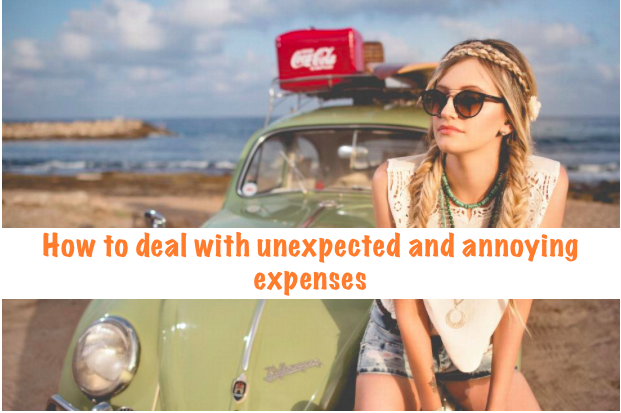Sometimes life is annoying. Sometimes you get a parking ticket. Sometimes you break a heel during lunch and HAVE to buy new shoes ASAP. Sometimes a pipe bursts and you have to hire a plumber. Or, much worse, sometimes your company decides to fire your whole division. Real talk.
So how can you financially deal?
Most Canadians deal with these bumps by putting it all on their credit card. That is far from ideal. That’s just delaying the problem and adding interest to it.
A far better way to deal with unexpected and annoying expenses is to build an emergency fund.
Yes, an emergency fund is BORING. It sucks to have to save 3-6 months of living expenses for that pile of cash to just SIT there, collecting a paltry 2% interest (IF YOU’RE LUCKY). But it’s also essential for 2 reasons:
- Peace of mind
Can peace of mind be overvalued? We don’t think so. You want to be able to have a restful sleep at night, free from anxiety dreams. You want to know that whatever happens, you can handle it.
2. Debt prevention
If you don’t have an emergency fund your only other option is to borrow money – and then you may end up in a spiral that can be difficult to dig yourself out of.
But what if I already have debt?
Mathematically, it makes little sense to save at the same time you have debt. Let’s say you have 7% debt, but can only earn 2% interest at the bank…or, more likely, if you have 20% debt and can only earning .05% at a big five bank. It may seem pretty pointless to save.
But math isn’t everything. We also have to consider psychology and habits.
Creating a savings habit is a good one to have. The habit will last longer than your debt. You also want to prevent yourself from falling deeper into debt than you already are.
So what to do?
Continue with your debt repayment plan, but don’t throw absolutely everything you have at it. Instead create a savings goal for $500-$3000 (depending on your income and expenses) so at least you have a bit of a cushion.
If you don’t have debt, you can now decide on your emergency fund savings goal.
You’ll want to be able to support yourself for at least 3 months, but depending on your industry and location, and how hard it is to get a job, it may be less.
This doesn’t mean you need to have 3-9 months of your total income in your account, just how much you’ll need to survive.
So take take all your fixed expenses: rent/mortgage, cell phone, internet, car payment etc., and add it up. Then figure out your necessary variable expenses like utilities and groceries by averaging the last 12 months of spending. Eliminate from this calculation any thing that would be non-essential if you weren’t working – like savings, clothes, makeup, entertainment and possibly daycare (if you lose your job and would be able to take on that role instead).
Once you have a figure, make a plan for how you’re going to reach it. This may take many months or years, but that’s okay.
How much do you have to sock away monthly to reach your savings goal? If you want an emergency fund of $15,000 for example, it will take you 2 years of putting away $625 a month. Is that doable for your budget? Don’t get overwhelmed. Remember that in just a single year you’ll have a soft cushion of $7500!
Once you figure this out set up an automatic payment…to yourself. Nickname an account “Emergency fund” in your online bank and transfer the same amount every month. That way you won’t touch it!
Want to learn more and make sure you’re on track? Then check out our online course!

In this course you’ll figure out EXACTLY how to create A REALISTIC BUDGET. When you over budget yourself, it’s like being on an all lettuce diet. It’s not sustainable and eventually you binge. This course will not set you up to fail. It’s realistic and you get to decide!
- Your customizable excel tool will take a hard look at:
- What’s coming in
- What’s going out
- How much you can REALISTICALLY SAVE for an emergency fund
Let New School be your emergency fund guru.


Recent Comments